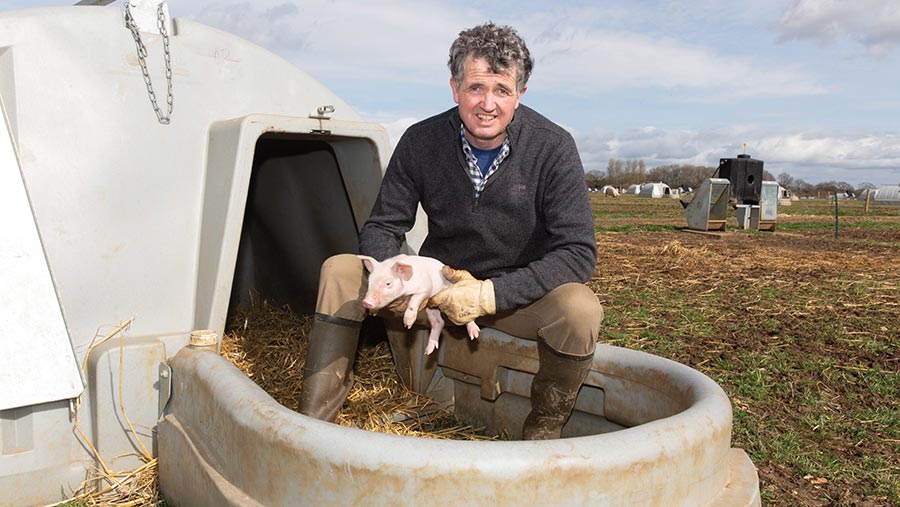Farmer Focus: Cover crops for pigs vital for green future
 © Tim Scrivener
© Tim Scrivener I must start by saying a very big thank you to all involved in staging the 2022 Farmers Weekly awards. The evening was a great success.
I’m not just saying that because I was fortunate enough to attend, or because I was honoured to return home the next day with one of the impressive yellow plaques.
Congratulations to everyone. I hope the other finalists found the experience as beneficial and rewarding as I did.
See also: Producers still losing £18-£20 a pig as inflation hits
A common theme among the finalists was the work they are doing to improve sustainability, especially minimising the environmental impact of their businesses.
Soil health, air quality, water course protection and carbon frequently topped the agenda.
Yesterday, we hosted a “green cover for pigs” open day to show results from two years of trials partnered by several environmental and agricultural agencies, as well as a seed supplier and BQP.
The ethos of the trial has always been multi-pronged – animal welfare, soil health, staff working environment and wildlife, in the broadest of definitions, were observed.
But the one topic that kept getting tentatively mentioned throughout the day was grass as a tool for reducing carbon footprint.
When we first started experimenting with pigs on grass, carbon sequestration and working to become carbon zero was not on our radar.
It is clear this is the way we must all head. Outdoor pig herds will need to establish cover crops on their sites. For fully integrated supply chains the complexities are massive.
Each piece of the jigsaw will have its own problems to solve, and some sectors will undoubtedly have to feed off the successes of others.
The feed supplier is the one that creates the biggest challenge in my mind.
Lots of large organisations are now making bold pledges to achieve carbon emission targets within relatively short periods of time. I’m always a bit wary of headline-grabbing pledges.
I still remember telling the wife I would tidy my shed last summer and I never did.
Actions, not ambitions, are what is needed, backed with clear support and guidance for farmers at grassroots level.
This is a new era for us and we are going to need to learn about a whole lot of stuff, fast.

